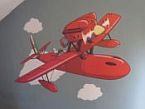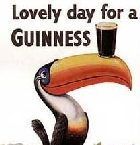Raverdave
Posts: 6520
Joined: 2/8/2002
From: Melb. Australia
Status: offline

|
Here is some info.....enjoy the read:)
[I]The Coast Watching Organisation of World War 2 was based on from the original Australian Coast Watching organisation which started in 1919 when selected civilian personnel in coastal areas were organised on a voluntary basis to report in time of war any unusual or suspicious events along the Australian coastline. The concept was quickly extended to include New Guinea (but not Dutch New Guinea) as well as Papua and the Solomon Islands.
The Coast Watching Organisation (WW2) commenced in 1939 under the command of the Royal Australian Navy through the Naval Intelligence Division, Navy Office, Melbourne. Lieutenant Commander R.B.M. Long was the Director of Naval Intelligence at that time. Lieutenant Commander Eric Feldt, who was on the Emergency List, was personally selected by Commander Long, mobilised and appointed Staff Officer (Intelligence), in Port Moresby. He had operational control of the Coast Watchers in the north eastern area of defence of Australia. This included the Australian Mandated Territories, Papua, and the Solomon Islands. There were about 800 personnel in the Coast Watching Organisation in 1939.
Eric Feldt had resigned from the Navy before the war and was employed by the Government in New Guinea. He knew the Island people, the Government Officials and the Plantation Managers who all placed great trust in Eric Feldt. Because of Eric Feldt, many civilian Coast Watchers opted to stay in New Guinea after war was declared and other civilians were ordered to be evacuated. They volunteered to stay behind Japanese lines and risked being captured as a civilian spy by the Japanese.
In 1942 the remaining Coast Watchers were mobilised into Navy service.
The Coast Watchers, such as Paul Edward Mason who was located on the southern end of Bougainville Island, would monitor Japanese activities and maintain radio contact with the Combined Operational Intelligence Centre (COIC) located in a secret command centre inside Castle Hill in Townsville. COIC was part of the Area Combined Headquarters located at Green Street in Townsville.
The Coast Watchers included reliable persons such as:-
- Post Masters
- Harbour Masters
- Railway officials
- School teachers
- Local police
- Government servants and officials
- Missionaries
- Civilian airline pilots
- Patrol Officers
- District Officers
- Plantation owners
Many of the above Government officials would have ready access to radio equipment as part of their normal public service role. They would report on:-
- unusual or suspicious events
- sightings of ships, aircraft or floating mines
- other matters of defence interest
The Navy would supply the Coast Watchers with Playfair Codes for their communications. Pedal radios were initially used for some of the remote Coast Watchers who did not have access to radios in their normal Government job.
The Coast Watchers worked on a voluntary basis entirely without remuneration. The Naval Intelligence Division produced and distributed a document called "The Coast Watching Guide".
After General Douglas MacArthur came to Australia and was appointed Supreme Commander of the South West Pacific area, Commander Long called a conference in Melbourne of all the Intelligence groups. Eric Feldt attended this meeting. Commander Long outlined a scheme to form a unit from all the different Service Units of the different countries which would report directly to General Headquarters (GHQ). This new unit would be funded by all the countries involved and would carry out activities behind enemy lines using resources from all of the countries involved. Not long after this meeting the Allied Intelligence Bureau (AIB) was formed in June 1942.
The Coast Watch Organisation or Combined Field Intelligence Service then became known as Section "C" of the Allied Intelligence Bureau (AIB). The role of Section "C" was "obtaining all possible information about the enemy, his disposition, movements, strength, etc. through such agencies as the coast watchers, native agents and civilian operations".
The Coast Watchers in the South Pacific Area remained part of Australian Naval Intelligence. To avoid any confusion with the two line of command, Lieutenant Commander Eric Feldt was placed in charge of the Coast Watchers in both areas. He would report to GHQ, SWPA for the South West Pacific Area and to Naval Intelligence, Melbourne for the South Pacific area.[/I]
And this
[I]But the Japanese were turned back at Midway and the Americans seized the initiative, invading Guadalcanal in August. Galer's VMF-224 landed there on August 30. Henderson Field was under construction; few mechanics were in place; mud was everywhere. But the Seabees worked miracles with PSP (pierced steel planking), and the "Cactus Air Force" began taking its toll on the Japanese bombers. Galer's pilots scrambled continuously to meet the Japanese aerial onslaught. Typically coastwatchers stationed in the Solomons warned them of incoming Japanese attacks. "Forty bombers headed yours," was a well-rembered radio message from the isolated coastwatchers. The fighters of VMF-224, VMF-211, and whatever else Cactus could put in the air would take off, looking to gain altitude before the Japs arrived. When the shooting started, they went for the bombers. After the dogfighting, if ammo remained, they would strafe enemy ships or ground positions.
Although short of gas at times, Galer said the aviators would have been in worse shape had it not been for the efforts of the Australian coastwatchers. Without the warnings from the coast watchers, the marine fliers would have wasted valuable gas circling the field waiting for the enemy. The coast watchers' warnings helped save many American lives, and also had a direct impact on Galer himself when his Wildcat was shot down. "'Barbara Jane' couldn't swim, so I had to swim off and leave her. I was fortunate to encounter the coastwatchers who assisted me in getting back the next day," he joked. This was one of three planes Galer lost to the enemy during his two and a half months on Guadalcanal - after another shoot-down, two Marines swam out from the island to assist him; a third ended with a dead-stick landing on the island. Each time, Galer went back into action, and in less than a month he accrued 11 individual kills.
[/I]
_____________________________
 Never argue with an idiot, he will only drag you down to his level and beat you with experience.
|
 Printable Version
Printable Version













 New Messages
New Messages No New Messages
No New Messages Hot Topic w/ New Messages
Hot Topic w/ New Messages Hot Topic w/o New Messages
Hot Topic w/o New Messages Locked w/ New Messages
Locked w/ New Messages Locked w/o New Messages
Locked w/o New Messages Post New Thread
Post New Thread